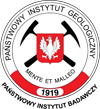Disposable groundwater resources database – current condition and development perspectives
Creation of a GIS database concerning groundwater disposable resources and its regular update is one of the major, fixed duties of the Polish Geological Survey (PGS - WL), necessary for proper water management in Poland. Works on such a database began in the Polish Geological Institute in 2006. The first step was to study the disposable groundwater resources, documented as disposable according to a procedure that is in conformity with Geological and Mining Law. In areas not covered by hydrogeological documentation, resources determined as prospective were studied. Simultaneously, the database structure was developed, adapted to the current needs, and its functionality was determined.
The database was created in the GeoMedia Access format under the 1992 coordinate system, which makes it possible to present the whole country within one mapping zone. The delineated areas where groundwater resources are determined and balanced constitute a geometric class of features in the GIS database. The database contains:
- division of Poland into balancing areas and water management regions, which – taking into account the hydrogeological conditions – were adapted to the borders of catchments included in the computerized 1:50,000 Map of the Hydrographic Division of Poland (reference material),
- attribute and geometric information on the areas of documented disposable resources along with the quantity of the determined disposable resources.
The database currently contains information on 73 hydrogeological documentations, prepared between 1994 and 2007 in order to determine disposable resources. The documentations received positive opinions of the Commission of Hydrogeological Documentation (KDH) and were accepted by the Ordering Authority (Minister of the Environment). It also contains data pertaining to 21 projects for geological works carried out to determine groundwater disposable resources. The structure of the database makes it possible to update the knowledge on the resources and their quantity in such a way as to take into account documentations prepared in subsequent years. Currently, modernisation works are being carried out, involving the database structure and supporting applications, the functionality of which will make it possible to:
- obtain, analyse and present data,
- import and export data,
- generate predefined printouts and reports.
The groundwater disposable resources database will be a basis for periodic water management balancing in selected hydrogeological units.

